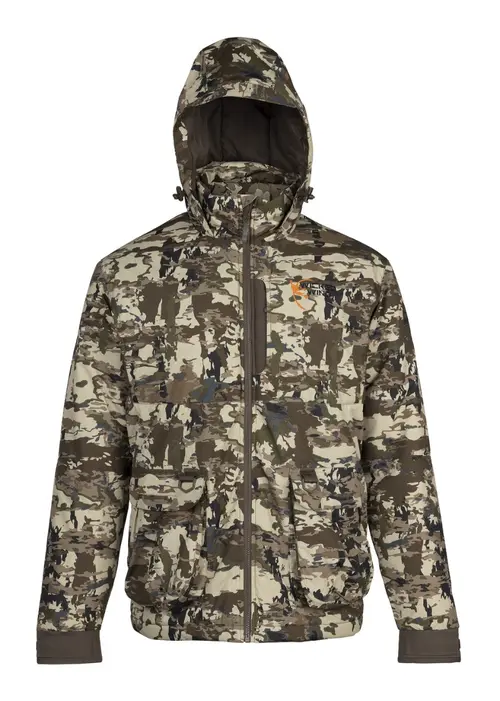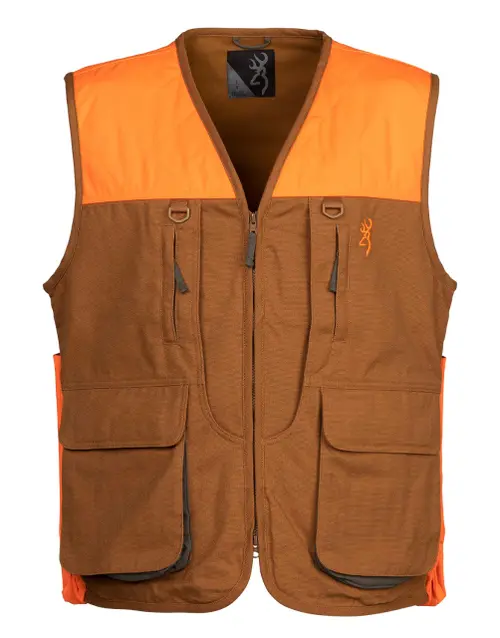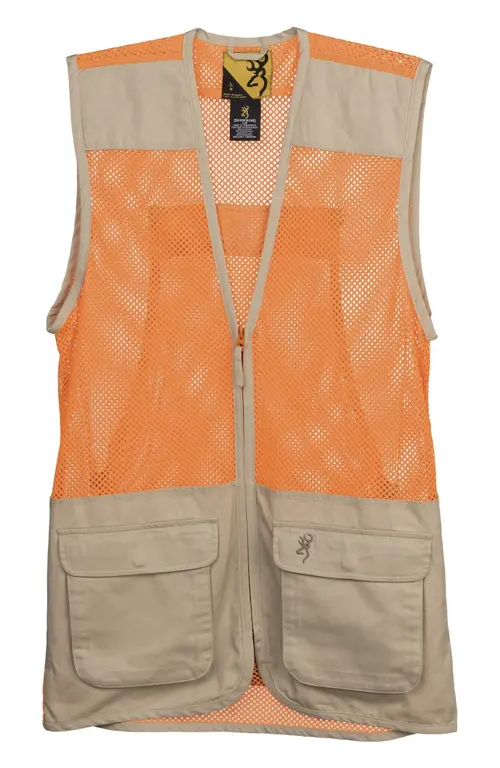Is A Sub-Gauge Shotgun Right For Me?
Is A Sub-Gauge Shotgun Right For Me?
By Scott Haugen Published on October 3rd, 2023
The interest in shooting sub-gauge shotguns continues growing for four primary reasons. First is the increased availability of smaller bore shotguns to the public, be they 16, 20, 28 gauges or .410s. These shotguns come in various actions, from pump to semi-automatic to break-action double barrels, even single shots, with each serving the needs of most hunters and recreational shooters.
Second, the availability of a wide range of sub-gauge shotgun shells appeals to hunters and shooters alike. Be it clay targets, upland birds, ducks, geese, or turkeys, there’s a specialized load to help maximize your shooting efficiency. There are even specialized 20-gauge shotguns with rifled barrels that sling slugs. These shotguns have proven to be whitetail slayers.
Third, with a growing number of youth and aging hunters in the field, many are finding the benefits of shooting reduced recoil shotguns. Whether you’re a small-statured shooter or have physical health concerns, firing a small-bore shotgun with minimized recoil can make shooting more fun, comfortable, and accurate.
Fourth, shooting lighter weight, sub-gauge shotguns helps remedy common shooting mistakes related to shooting larger-bore shotguns with aggressive recoil.
Sub-Gauge Points to Consider
Sub-Gauge Points to Consider
What are more points to consider when deciding whether a sub-gauge shotgun suits you? Start with addressing your level of shooting experience, whether or not recoil negatively impacts your joy of shooting, your ability to shoot accurately, and address what type of hunting you do with a shotgun.
When it comes to hunting, there’s no arguing that a 12 gauge loaded with 3-inch shotgun shells will increase the odds of hitting a bird. It’s simple math: the more pellets in a shotgun shell, the greater the odds of hitting a target. But if you’re cringing at the shot and missing targets, shooting accuracy plays a more important role in hitting the target than throwing fast-moving, big payloads from a gun that packs an intimidating punch.
If you’re pass shooting or jump shooting ducks and geese, shooting a sub-gauge shotgun with payloads of tungsten, bismuth, or plated steel can deliver results comparable to shooting steel shot from large bore shotguns. Many hunters are discovering that the smaller shot sizes of tungsten, with its increased density, outperform steel shot fired from bigger-bore shotguns.
Close-Range Killers
Close-Range Killers
If you hunt ducks and geese over decoys, switching to a sub-gauge shotgun is simple because decoying aims to draw birds in close for the shot. The biggest question you’ll have to answer is: If I pick a sub-gauge to shoot birds over decoys, will I be hunting alone or with friends?
If hunting alone, the choice is easy because you control when you shoot. But if you like hunting with a buddy, or four or five buddies from one blind, shooting a sub-gauge can be frustrating if everyone is not on board. This is because the more hunters in a blind, the more competitive the shooting can become. The result is fellow hunters firing at birds before reaching the sub-gauge range. If everyone is shooting a sub-gauge, that makes things easier. If you’re the only one shooting a sub-gauge, situate yourself on the downwind side of the decoys to have the first and closest shot opportunities.
Upland & Clays
Upland & Clays
If you’re an upland bird hunter, choosing a sub-gauge shotgun is relatively straightforward. This is because the first shot at a holding covey is typically very close. Follow-up shots are also well within comfortable sub-gauge range. But what if it’s windy, or you’re hunting chukars in steep country or edgy ptarmigan on windy days on the tundra? In these cases, a big-bore shotgun might be a bonus with its larger payload. Then again, do you want to carry a heavier shotgun up and down vertical cliffs all day or for miles across the tundra?
Clay target shooters firing high volumes have known for decades the value of shooting low recoil loads, often in sub-gauge shotguns. Less recoil means less noise and improved shot accuracy. Shooting sub-gauge loads with smaller payloads will also increase shooting accuracy as they encourage pointing and swinging, not aiming.
Sub-Gauge Accuracy Hacks
Sub-Gauge Accuracy Hacks
Don’t aim your shotgun. Shotguns should be shouldered, pointed at the target and swung with the target as it moves, leading it as it travels. Lighter weight sub-gauges are easier to maneuver, swing, and control than heavier shotguns. Avoid sighting down the shotgun’s rib when swinging on a moving target.
Instead, look past the rib and the bead ahead of your target and lead it. The more you shoot, the more you’ll learn how far to lead flying clays and birds as they move at a certain speed. Shooting a shotgun effectively is all about feel, and the more you shoot, the more you develop that feel. You’ll also learn how wind can move a shotgun shell pattern.
This is simple to apply and track when shooting a lightweight sub-gauge with less recoil because you stay in the gun longer and can instantly observe the results.
When swinging on a bird or clay pigeon, focus on the target, not the bead of your shotgun. The failure to focus on a bird is a big reason for missing a shot, and sometimes recoil concern in big bore guns is to blame for this. If hitting birds in the body or too far back, focus on the bird’s head when acquiring the target. The smaller the part of the target you focus on, the greater the chance of hitting it where you want to, and sub-gauge shotguns accentuate this because of their maneuverability.
Heavy shotguns can also make swinging too fast or stopping the swing more prominent, resulting in missed shots. This is because guns that are heavy to handle can be hard to slow down if swinging on fast-moving targets like upland birds or skeet. A lighter-weight shotgun moves with the target more efficiently, maximizing the control of the swing.
At the same time, heavy guns can inhibit following through on the shot. This is evident when hunting decoying waterfowl. If you’re raising to shoot ducks and geese as they drop into the decoys or fire at them on the final swing, and you find yourself raising, aiming, and not following the target, a sub-gauge might help.
Shooting a too-heavy gun causes the shooter to shoulder the gun and fire too quickly before acquiring the target. Shooting a shotgun is unlike shooting a rifle; you don’t aim it. Think of playing catch with a football in the backyard, where you lead the person you’re throwing the ball to so they can run under it for the catch. That’s what the swing of a shotgun should feel like, and lighter weight sub-gauges encourage good form.
Finding The Right Load For Your Sub-Gauge Hunt
Finding The Right Load For Your Sub-Gauge Hunt
Before hunting with a sub-gauge shotgun, pattern any load you plan to use. This is the only time you’ll treat your shotgun like a rifle. From tripod shooting sticks or even a bench with a sandbag, fire at a paper target to see the pattern your choke and load produce. You may find that different loads, even from the same manufacturer, can pattern differently.
Experiment with different choke tubes to find the best load for your hunting or target shooting applications. If loads are not centering on the target, install a shim plate in your shotgun. In sub-gauges — as with all shotguns — not all loads pattern the same from every gun. Understanding the relationship of the gun, choke, and load takes time but will result in more accurate shots. It will also take your confidence to the next level, so you’ll hit more targets.
Not Just for the Small & Old
Not Just for the Small & Old
Shooting a sub-gauge shotgun isn’t just for smaller and aging hunters. More skilled hunters choose sub-gauge shotguns because they’re easy to handle, and the reduced recoil makes the shooting experience more enjoyable. Many experienced bird hunters also confirm that their shot accuracy has increased with sub-gauge shotguns, meaning they’re shooting fewer shells, saving time and money on each hunt.
Once you shoot a sub-gauge shotgun, you’ll notice immediate differences compared to a 12 gauge. You might even find that a 20 gauge is ideal for your duck and goose hunting needs, a 28 gauge is a great upland go-to, and a .410 bore works well when shooting ducks over decoys in little creeks and timber.
Final Thoughts
Final Thoughts
As with shooting any gun, the more you handle and shoot a sub-gauge shotgun, the more familiar you’ll become with its performance. You’ll realize the benefits and/or drawbacks and how they relate to your personal shooting and hunting experiences. Ultimately, deciding whether a sub-gauge shotgun suits you comes down to how well you match the gun, choke tubes, and loads to fit the hunting and shooting situations you find yourself in.






